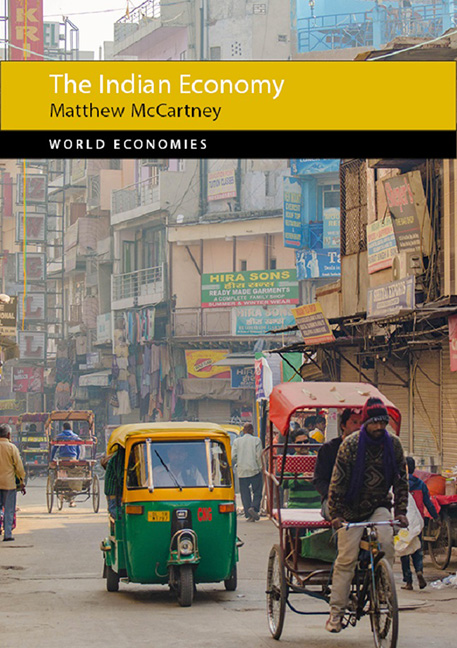Book contents
- Frontmatter
- Dedication
- Contents
- Acknowledgements
- List of Tables and Figures
- Maps
- 1 Introducing the Indian economy, 1947–2017
- 2 The Indian economic story since 1947
- 3 Measuring economic and human development
- 4 The form of the Indian economy
- 5 Human factors in the Indian economy
- 6 Making the Indian economy unique
- Conclusion: prospects for the Indian economy
- References
- Index
5 - Human factors in the Indian economy
Published online by Cambridge University Press: 09 August 2023
- Frontmatter
- Dedication
- Contents
- Acknowledgements
- List of Tables and Figures
- Maps
- 1 Introducing the Indian economy, 1947–2017
- 2 The Indian economic story since 1947
- 3 Measuring economic and human development
- 4 The form of the Indian economy
- 5 Human factors in the Indian economy
- 6 Making the Indian economy unique
- Conclusion: prospects for the Indian economy
- References
- Index
Summary
Economic theory and empirical evidence suggests there is a close link between economic growth and wider measures of human development, or as Pritchett and Summers (1996) wrote, “wealthier is healthier”. Economic growth will generate incomes that can be spent by households on education, health or nutrition, or be taxed by the government to fund public spending on social services. Economic growth will also lead to the creation of more high-paid jobs and so increase the incentive for households to educate children, so they have a better chance of acquiring such jobs in later life. A debate has arisen in recent years about whether India is experiencing “growth without development”, or as Dreze and Sen (2013: ix) put it, “that the growth process is so biased, making the country look more and more like islands of California in a sea of Sub-Saharan Africa”. Bhagwati and Panagariya (2013) have argued otherwise, that economic growth has been generally inclusive and has led to reductions in poverty. This chapter will outline the human development story of the contemporary Indian economy using case studies of poverty and inequality, education, health, labour and employment, and gender, here focusing on the unusually low and declining level of female labour force participation and “missing” women.
POVERTY
Between 1950 and 1955 the poverty head count ratio (HCR) averaged over 50 per cent and fluctuated between 45 and 60 per cent until the early 1970s. The HCR then began a systematic decline lasting until the mid-1980s, after which there were further fluctuations around a modestly declining trend (see Chapter 3 for more details). However, despite this fall in the percentage, owing to steady population growth, the absolute numbers of people in poverty has risen, from 200 million in the early 1950s to 300 million today. The decline in poverty (HCR) had been general across all states between the early 1970s and into the 2000s, but by the late-2000s it was falling faster in those states, such as Bihar, Uttar Pradesh and Odisha, that had the highest initial levels of poverty.
- Type
- Chapter
- Information
- The Indian Economy , pp. 129 - 194Publisher: Agenda PublishingPrint publication year: 2019



